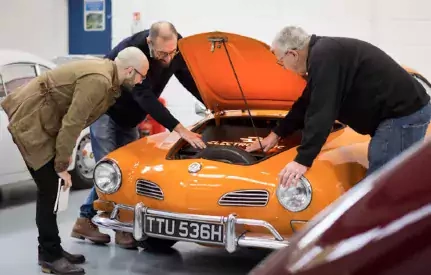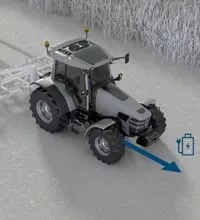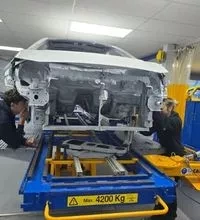EV Conversions 101

Electrification is taking off and more cars are coming into the market with EV powertrains. But what happens to classic combustion vehicles? Well, you could convert them, it’s what Electrogenics is doing.
As the world moves steadily towards full on electric driving, classic car owners are left with a choice. Do they doggedly stick with petrol, or choose to convert their cars to run on electricity? If they choose the latter, what happens? How do you figure out what to ditch and what to keep? Getting your head around the process can be tricky. To explain all MotorPro spoke to Steve Drummond, Director and Co-Founder of EV conversion specialists Electrogenic, (check out issue 16 of the magazine to see its converted Porsche 356).
When a car comes in full of oily bits, what does Electrogenic do? Drummond doesn’t beat about the bush: “We remove the engine, fuel tank, exhaust, and sometimes gearbox,” he says. Everything, then.
With the old bits gone, the Electrogenic team and their clients have a decision to make – what kind of motor do you want? Well, according to Drummond that relies on a number of factors: “Do you want rapid charging or not? That determines the voltage of the battery system and hence the motor. Will the motor be between the driven wheels? If yes, you’ll probably need one with an integral gearbox and differential. How much power and torque does the customer want? How much does the customer want to spend?”
A raft of decisions to be made, but of course, Drummond and his team are limited by how much space a donor car has. A BMC Mini, for example, likely won’t have as much space for batteries as a Jaguar E-Type (both vehicles Electrogenic has converted). Drummond explains: “How many is determined by the operating voltage of the motor (the batteries need to add up to the right voltage) and the vehicle range required between charges. Miles per kilowatt hour (kWh) battery storage is determined by the weight, aerodynamic qualities, and speed of the car. The battery pack can be configured by combining the right voltage batteries in series and parallel to get to the required overall system voltage and the kWh storage required to give the desired range.”
Motor decided, batteries laid out, what’s next? Well, it turns out that installing an efficient motor where once there was a loud noisy thing belching out heat isn’t great if you want to drive your car in colder climes. Thankfully solutions are available: “An ICE engine is about 30% efficient, and all the rest of the energy in the petrol is lost in the form of heat. Our motors are about 96% efficient, so there is not much energy wasted as heat. We either use the existing car heating system, putting an immersion heater into the existing heating loop. Or we install a heating unit with an electric element and a fan,” says Drummond.
While changing the powertrain is the focus, Electrogenic is keen to keep its cars as original as possible. It would be easier to remove a car’s instrument binnacle and replace it with a generic screen linked to an ECU, but not here: “We have a small unit that sits behind the dash that outputs the EV information to the traditional dials.”
Electrogenic can also fit a manual gearbox for you, should you so choose. Despite the fast-paced development of tech, Drummond says keeping cars up to date is pretty easy: “The car is fully upgradable. Some of this is software-based. The main thing that customers may want to change in the future is batteries as their range improves over the coming years. That’s a simple matter of swapping them out,” he says.
Electric conversions may sound simple from the off, but as Drummond has made clear you really need to know what you’re doing, and think of all the small stuff. That said, with the automotive space heading to an electric future, there could be many more converted cars on the road keeping the classics part of the vehicle relevant for some time to come.




